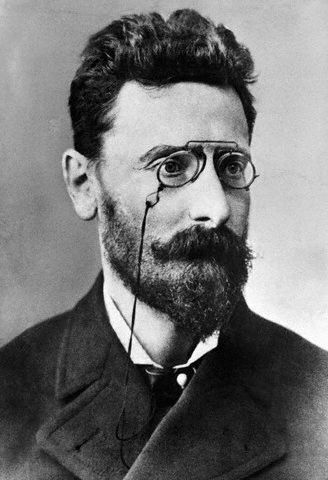To celebrate Joseph Pulitzer’s life and legacy, For Reading Addicts presents to you: The Joseph Pulitzer Timeline.
The Pulitzer Prize is well-known in literary circles, especially in the USA, but many do not know much detail about the man behind the prize. The Hungarian-born American, Joseph Pulitzer, gave money in his will to Columbia University to launch a school of journalism, and establish the Prize itself, specifying “four awards in journalism, four in letters and drama, one in education, and four traveling scholarships.”
The Prize evolved over the years, expanding from its original concept, to many categories including Prize for Commentary, Prize for Music, and a Prize for Poetry. We are sure Joseph Pulitzer would be happy to have his name continue to be used to champion some of the best writers and thinkers of our time.


Joseph was born to a German mother, a devout Roman Catholic, Elize Pulitzer (nee Berger) and Fulop Pulitzer, a wealthy grain merchant of Magyar-Jewish origin. Joseph grew up with his younger brother Albert in Budapest, where their father retired.

Joseph’s father died and his business went bankrupt. At the age of seventeen, Joseph decided to become a soldier and attempted to enlist in the Army but was rebuffed because of his weak eyesight and frail health. Both of which would unfortunately plague him continuously during his life. However, it didn’t stop him from joining the Lincoln Cavalry after moving to the USA.

Joseph bought a share in the Westliche Post for $3,000, and then sold it for a profit the following year in order to buy the St. Louis Post and the St. Louis Dispatch, merging them to become the St. Louis Post-Dispatch.
During 1878 Joseph marries Katherine Davis (Kate), a reportedly good and decent woman from a wealthy Mississippi planter family. Kate was distant relative of Jefferson Davis, former president of the Confederate States of America. They had seven children, although sadly only five lived to adulthood: Ralph, Joseph Jr., Constance Helen, Edith, and Herbert.

Pulitzer introduced the techniques of yellow journalism to the newspapers he acquired in the 1880s, techniques included exaggeration, sensationalism, and scandal-mongering. The term ‘yellow journalism’ was coined by Erwin Wardman in the mid-1890s. It was used to identify the less-than-honourable journalism that used yellow ink, particularly in the battle of the papers between Joseph Pulitzer’s New York World and William Randolph Hearst’s New York Journal.

Pulitzer served at the House of Representatives as a Democrat. He was there from March 4th 1885, until (his birthday) April 10th 1886. He resigned part of the way through his term because he was feeling pressure from his journalistic responsibilities.
It was lucky he did as by 1895 the New York World was fast becoming an extremely popular paper. They introduced the ‘The Yellow Kid comic’ by R. F. Outcault, one of the first strips to be featured in a Sunday colour supplement. Thanks to Joseph Pulitzer’s leadership, circulation grew from 15,000 to 600,000, and it became the largest newspaper in the country.

In 1908, Pulitzer had his personal physician aboard his yacht as his health was failing him drastically. While traveling to his winter home on Jekyll Island, Georgia, Pulitzer had his yacht stop in Charleston Harbor, South Carolina. In October, 1911, Pulitzer listened to his secretary read aloud in German, and as they neared the end Pulitzer said, “Leise, ganz leise” which in English means “Softly, quite softly”, and he passed away.

Jurgis Bielinis and the Day of the Book Smugglers

Word of the Day – Nonpareil

10 Hot New Releases for May 2022

Is the ‘Great Omar’ the Unluckiest Book in the World?



